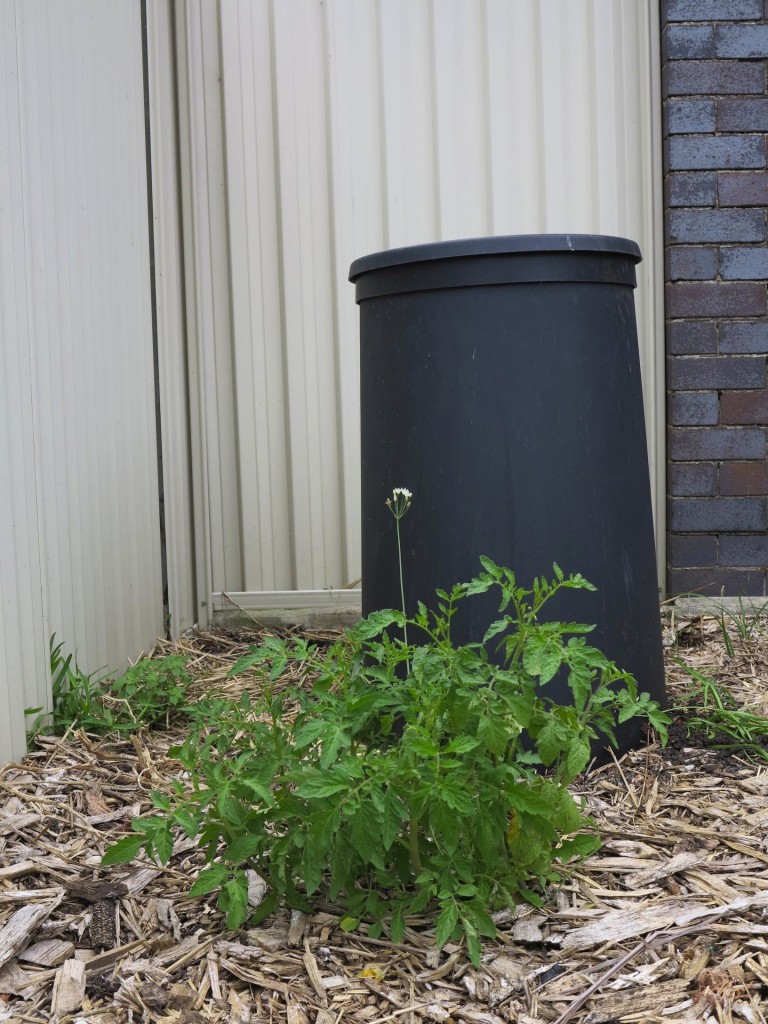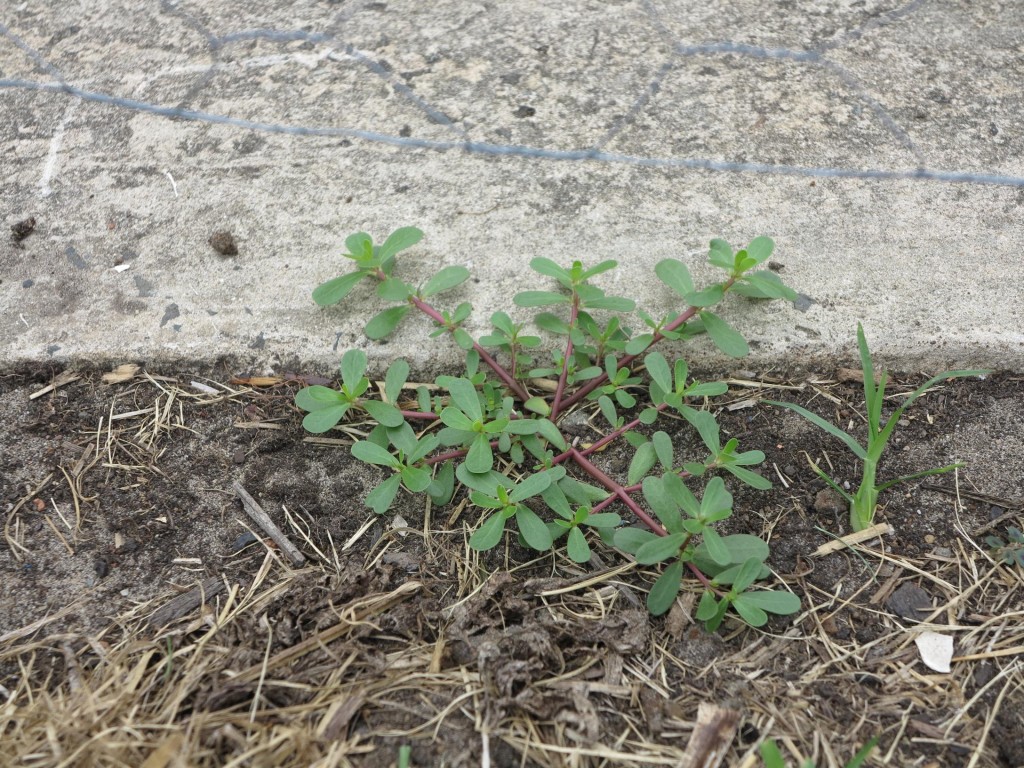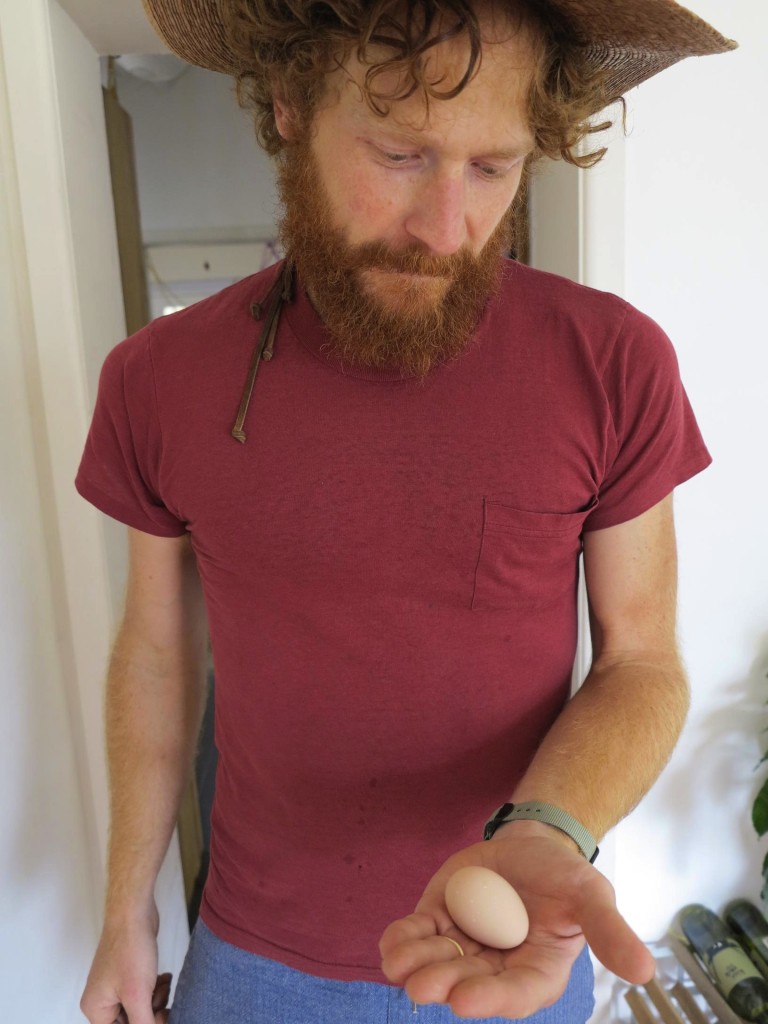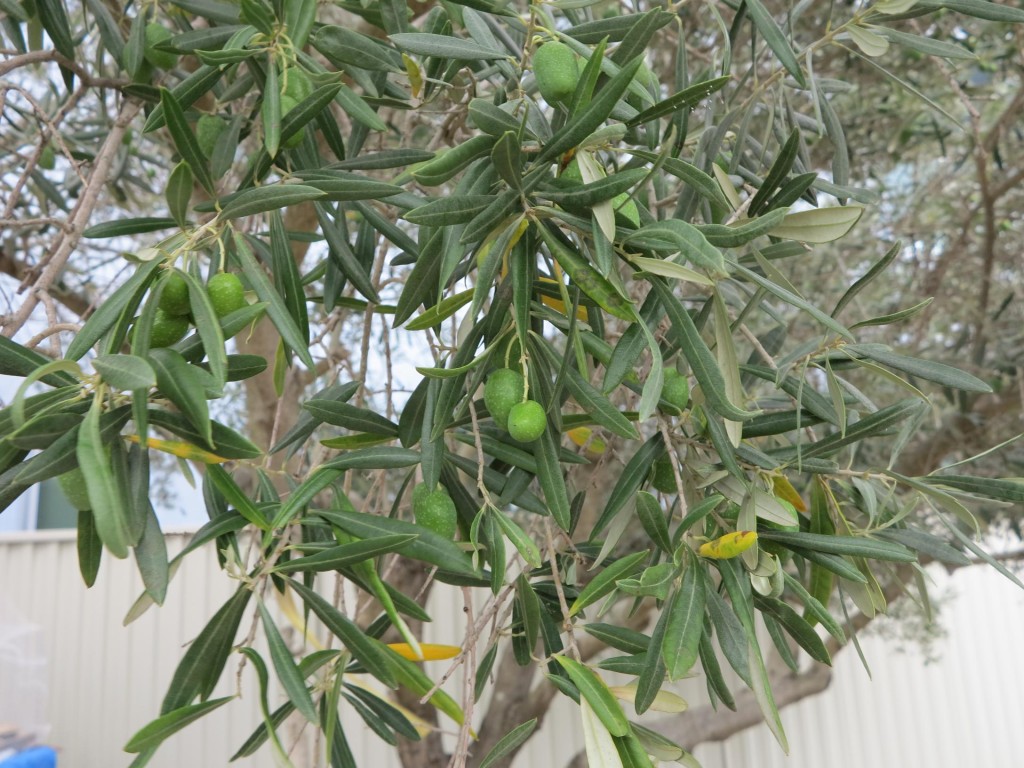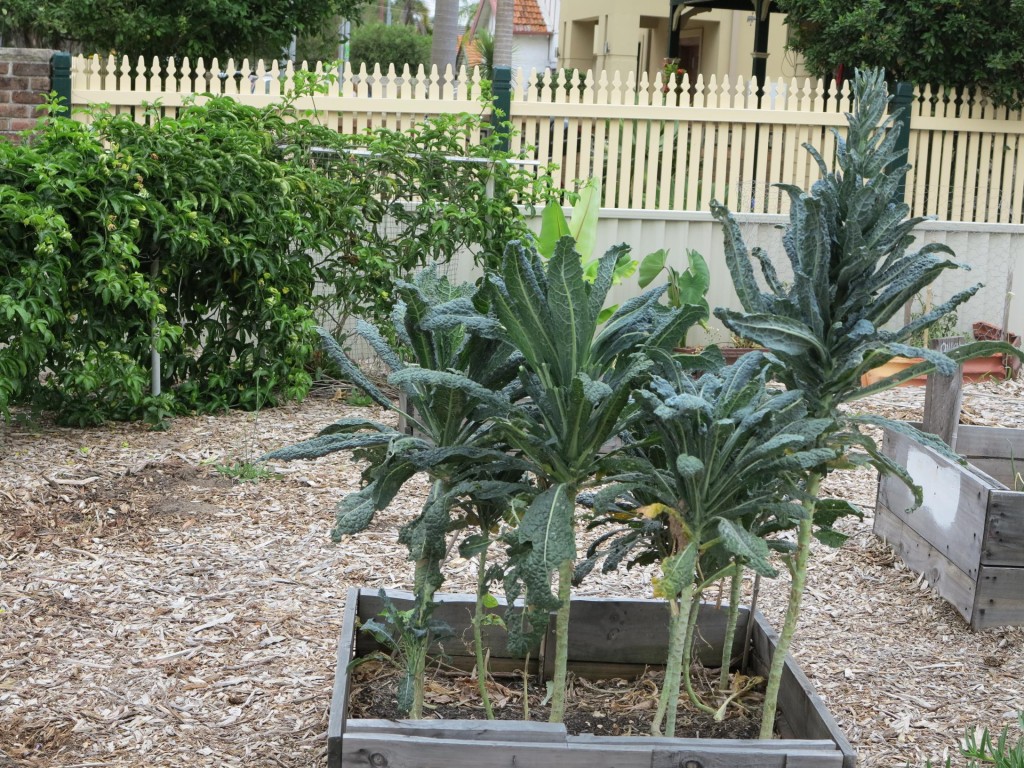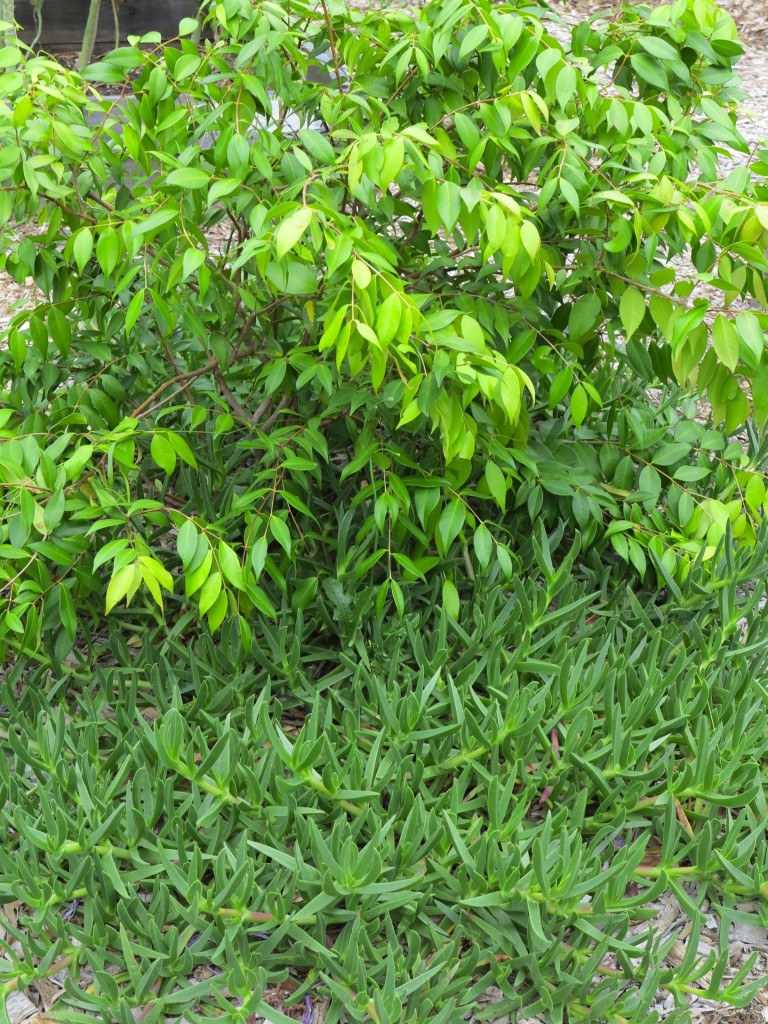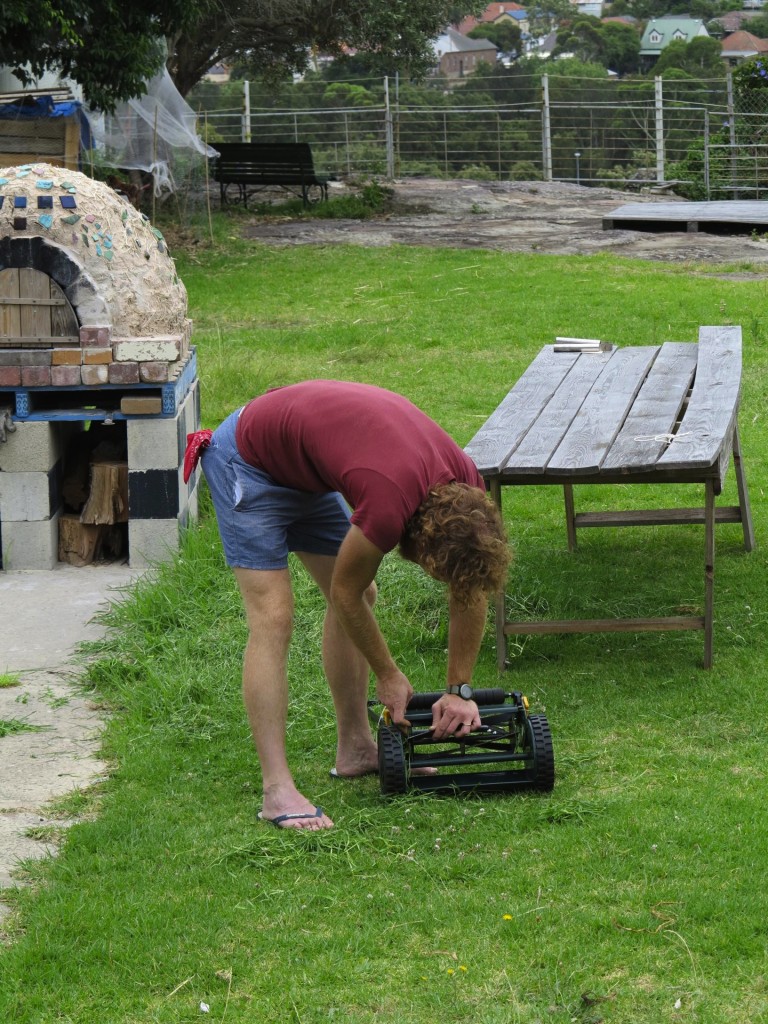We are at the end of our first full year in the farm. 2013 has been great! I’m going to try and summarise the year and the ideas we are grappling with at its end, in a short series of photos all taken on Christmas Eve.
IMAGES 1-3: WEEDS
1) Mint as Weed
The big question for any farmer is what to do about weeds. There are many ways of handling weeds. We are good friends with Sydney’s Weedy One, Diego Bonetto who makes a living out of encouraging us to embrace wild food and view the outcasts of the plant world differently; we’ve read Michael Pollan’s lucid reflection on his own battles with pioneer species, “Weeds are Us”; and recently were at a luncheon with my mum and her neighbour announced proudly that she was late for the party because she’d been out spraying weeds. While we have taken a clear position on the latter – we do not spray weeds at Earlwood Farm – we cannot entirely embrace the wild either.
This first image is of our hot water system. We have encouraged two weed-like plants – common mint and cosmos – to compete with the insanely innovative Asthma Weed in a bed of poor soil between the house and the driveway. In our speedy neo-darwinian experiment, the mint and cosmos are winning! So one way we handle weeds is to grow things that will beat them!
2) Happy Accidental Weeds
Secondly, we have recently realised that tomatoes are actually better as weeds. When we try and grow tomato from seed we struggle to get the plant going, when it springs up by itself from the compost we find it is much happier. If we wanted to get into seriously farming tomatoes we might have trouble with this method, but for now we aren’t pulling out all the weed tomatoes and we have found a steady supply in the kitchen in the early summer. So another way we handle weeds is to compost and encourage the spread of seeds we want in the soil and let them grow when they come up.
3) A weed by any other name
We also pull out lots of weeds, from farmer’s friend and dandelion to asthma weed and onion grass (all sorts of grass, for that matter!). But we also utilise the knowledge we’ve gleaned from Diego and others to bring some weeds “into the family”, so to speak. We have kept portulaca (pictured below) growing in many nooks and crannies in the yard which is a good substitute for lettuce in greek salads, we’ve put flaxleaf fleabane in the pantry to discourage moths and other unwanted critters, we munch on certain types of oxalis, and, of course, we’ve stolen some nasturtium seeds from the laneway down the hill and have actively cultivated its bright coloured and mustard flavoured flowers.
Images 4-6: CHICKENS
4) Omnis Gallina Habet Die
When Craig was writing his PhD, he took some time out to create a logo for the farm that existed entirely in our imaginations. “Every Chicken Has Her Day” is the translation from latin motto and the chicken’s crown is, obviously, more like a real diadem. The logo is part parody of unnecessary branding, part serious branding exercise and part reimagining of the relationship between humans and non-humans that we’d like to see take hold in cities.
2013 has been a year of scandal when it comes to the labelling of commercial eggs “Free Range”, with what can pass as Free Range being challenged by consumer groups and animal rights advocacy organisations. The result is pressure to redefine what free range is; in the meantime companies who exploit the lax regulation around the term are being named and shamed. We think our three little chooks are having a pretty good time. While we think they have an ethically free rangin’ life, the main threat to their quality of life is foxes. Many of our friends have lost chickens to the sly creatures and so we are working hard to be responsible and grown up and make sure the coop gets closed every night when they go to bed.
6) The First Egg
We are happy to say that after several weeks of waiting and watching, Daria, our biggest Australorp, layed one small egg on Christmas Eve. A pressie for us all! This is doting farmer, CMJ, looking lovingly upon Daria’s Christmas Miracle!
Images 7-10: IDENTITY
7) Greek Heritage
Earlwood is an old Greek suburb. After we moved in we realised quickly that the main road, Homer Street, was not, in fact, named after Homer Simpson, but the ancient Greek poet. The main markers of this cultural heritage are the continental delis and imported wine and food shops in downtown Earlwood, Acropolis funeral services and the Olive Trees that are scattered around the suburb. We are lucky enough to have a big kalamata olive tree in our yard and this year it is heavy with fruit. We plan to get picking and pickling in early 2014.
8) Kale
Kale is the hipster of the brassica family and the #1 vegetable choice of hipsters. Most people eat it just like a spinach or silver beet, but it also comes as Kale smoothies, Kale chips, Kale Hashtags, Kale T-Shirts and so on. With our desire to pickle olives (and other things like radishes, cabbage etc), as if Earlwood Farm were merely a spin-off of the parody of such tragically hipster pursuits, Portlandia, it seems only appropriate that we give urban-ag skeptics something to snark at with our giant Kale plants that grow strong and tall, downstage centre in the front yard.
N.B. The absence of front lawn! In the working bee of 2012 we spread the mulch and got rid of the grass. With intermittent weeding, we have largely succeeded in keeping the grass at bay and the soil beneath is getting sweeter and richer every day. N.B.II the passionfruit vine in the background has grown 100 times bigger since we planted it a year ago, nothing to snark at there!
9) The Natives
Aside from the definitional complexity inherent in the term “native”, there is a meaningful tension between food crops and native plants. Australian Native plants are defined by ecologists and plant taxonomists as plants that were on the Australian continent prior to the arrival of Europeans, anything that came after is invasive. There are a range of complexities around this and such complexities are a hot topic for debate at Earlwood Farm. This is largely because one resident is an ecologist and the other is a cultural theorist suspicious of such labels and taking a strong position on either side of this debate is important for our respective professional identities.
Regardless, there are some points of bipartisanship. Firstly, we agree that “native” trees offer important habitat and food for threatened wildlife in cities. The other thing that is really interesting, and something that we are making a bit of a project out of at the Farm, is how to balance the desire to create habitat and food for wildlife with the desire to produce food for humans. The preferred habitat for wildlife seems to be certain kinds of native trees and most of the food plants we prefer to eat are non-native. So while we have an abundance of food crops, we also have a natives garden in the back corner of the back yard and a lillipilli and foraged pig face growing in the centre of the front yard. We are attracting all sorts of birdlife as we create more habitat for the nonhumans, at the same time as producing food for the humans. We want all animals to be happy at Earlwood Farm and we hope to continue to cultivate in this way in 2014!
10) Work
Despite the subcultural status of urban-ag in Sydney, it still is hard and often unglamorous work. We didn’t succeed in transforming as much of the backyard as we’d planned. This has frequently caused us to have to explain to people that “yes, this is a farm” and assure them that it is very much a work in progress. The word “farm” conjures up certain images, as if everyone’s brain was programmed by google image search, and Earlwood Farm has yet to appear in the that particular search. At the end of 2013, the name Farm is still a bit more of idea and intention rather than a coherent reality. The the goal for 2014 is to bring the name and the materiality of the site closer together! But for now we have lots of grass that needs mowing, grass that threatens our identity as farmers and grass that clogs up our little push mower.
Thanks for following the blog in 2013! Happy Holidays!

